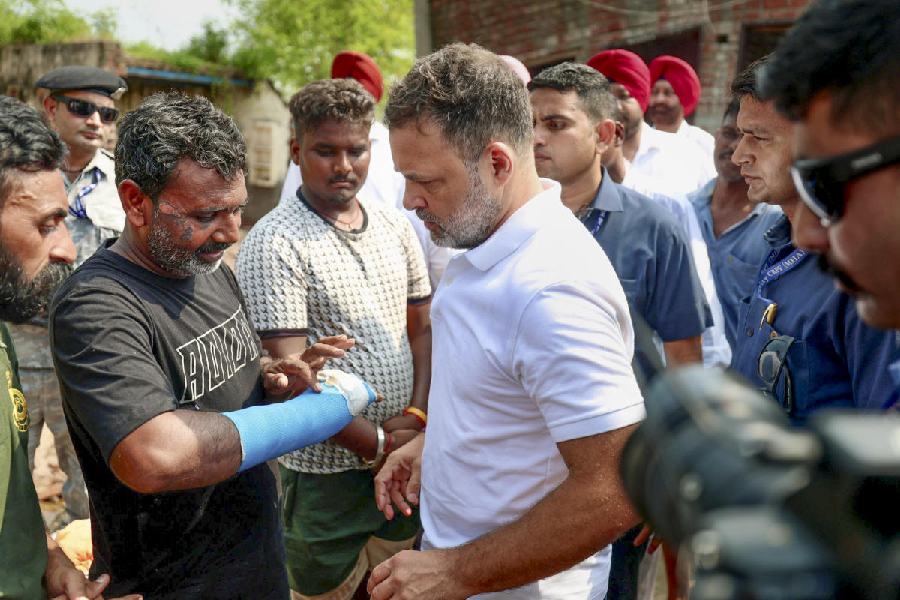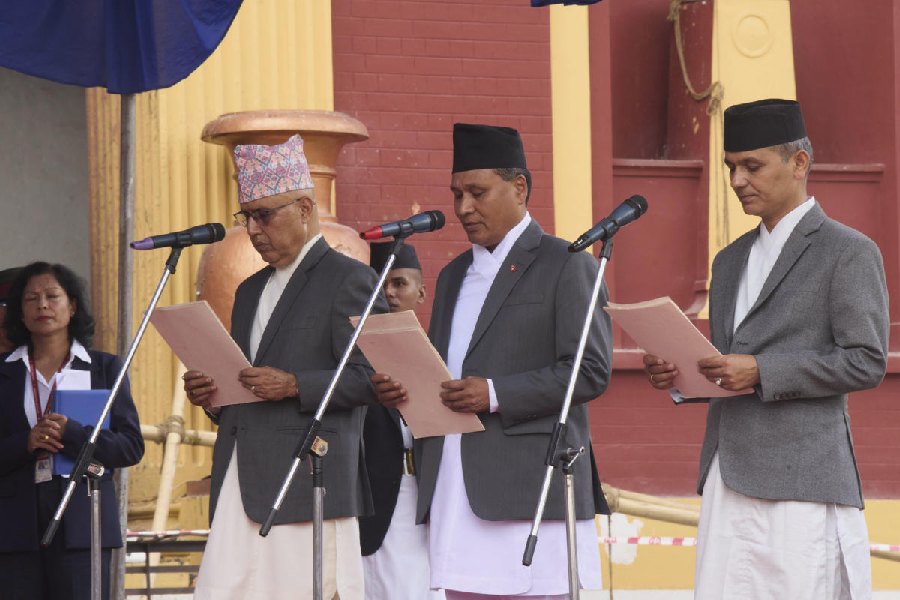
July 2: Call it the indirect approach.
A group of architects, who revived a canal in Gurgaon by working on the space around it, has a set of plans to revitalise Calcutta's canals as well.
SEARCH, a Delhi-based architectural firm, which released the book Blue Lines of Kolkata on the canal network of the city at Oxford Bookstore last week, spoke about a few specific proposals it has on the city.
But its starting point was the Gurgaon project.
In 2015, VSPB Associates, the knowledge partners of SEARCH, took up the Wazirabad canal in Gurgaon, which was an irrigation canal constructed during the British era and has a mud bundh constructed along it. The canal area was used often as a shortcut by women who worked as domestic help to return home to adjacent slums, and they frequently complained how insecure they felt walking by the dark, dirty canal side. The canal side was an open defecation area. Pigs would roam about.
So, when an NGO, IAmGurgaon, initiated the idea to clean up the area, VSPB Associates decided on its strategy of clearing up the environs, so that the focus could slowly return to the water.
The firm worked on 2.2km of the 5.2km canal side; the rest was a Haryana government project.
"We first built cycle tracks. Building debris from construction projects in Gurgaon was recycled as consolidating material on which the tracks were built. No vehicles are allowed in the area," said S.P. Biswas of SEARCH, who has edited Blue Lines of Kolkata with Saurabh Tewari.
Pedestrian tracks were built using material that soaked rainwater to recharge the canal. Rainwater is precious in Haryana. Gates were designed in such a way as to admit wheelchairs, but no vehicles. The space is also designed to give complete access to the visually impaired.
"And not a single tree was cut," says Biswas.
As a result, today the space is not only an open, public space which attracts morning walkers and children, it is also an example of how a government can be moved into action.
"Since this space was opened up, people started looking at the canal water, clogged with plastic and sewage. No one threw plastic in any more. And last week Gurgaon authorities began to clean the drain," said Biswas.
The project had been funded by American Express CSR.
In Calcutta, which is a network of canals, much of the waterlogging is because of the fact that the canals are not cleaned. "The pollutants form a thick surface, because of which the water does not flow," said Biswas. The water from the city does not drain.
SEARCH's proposals for the city are included in Blue Lines of Kolkata. In December it held a workshop in the city with IIT Kharagpur at the institute's Salt Lake campus, in which architects, students and experts from other disciplines participated.
The workshop looked at three city canals: the Beleghata canal, the Salt Lake canal and the Kestopur canal and came up with nine proposals, graphic representations of which were on display at the bookstore.
The proposals talk about practical but creative solutions on the canal banks that take into account the population living there, their livelihoods and the geographical features of the locality. One proposal on the Salt Lake canal recommends making the banks themselves an exhibition of the city.
In Seoul, an elevated highway over Cheonggyecheon creek, once dirty and neglected, was removed to turn the area around it into a lively arts district. Such thinking is required in urban planning, says Biswas. Calcutta needs an Urban Arts Commission, he says.











